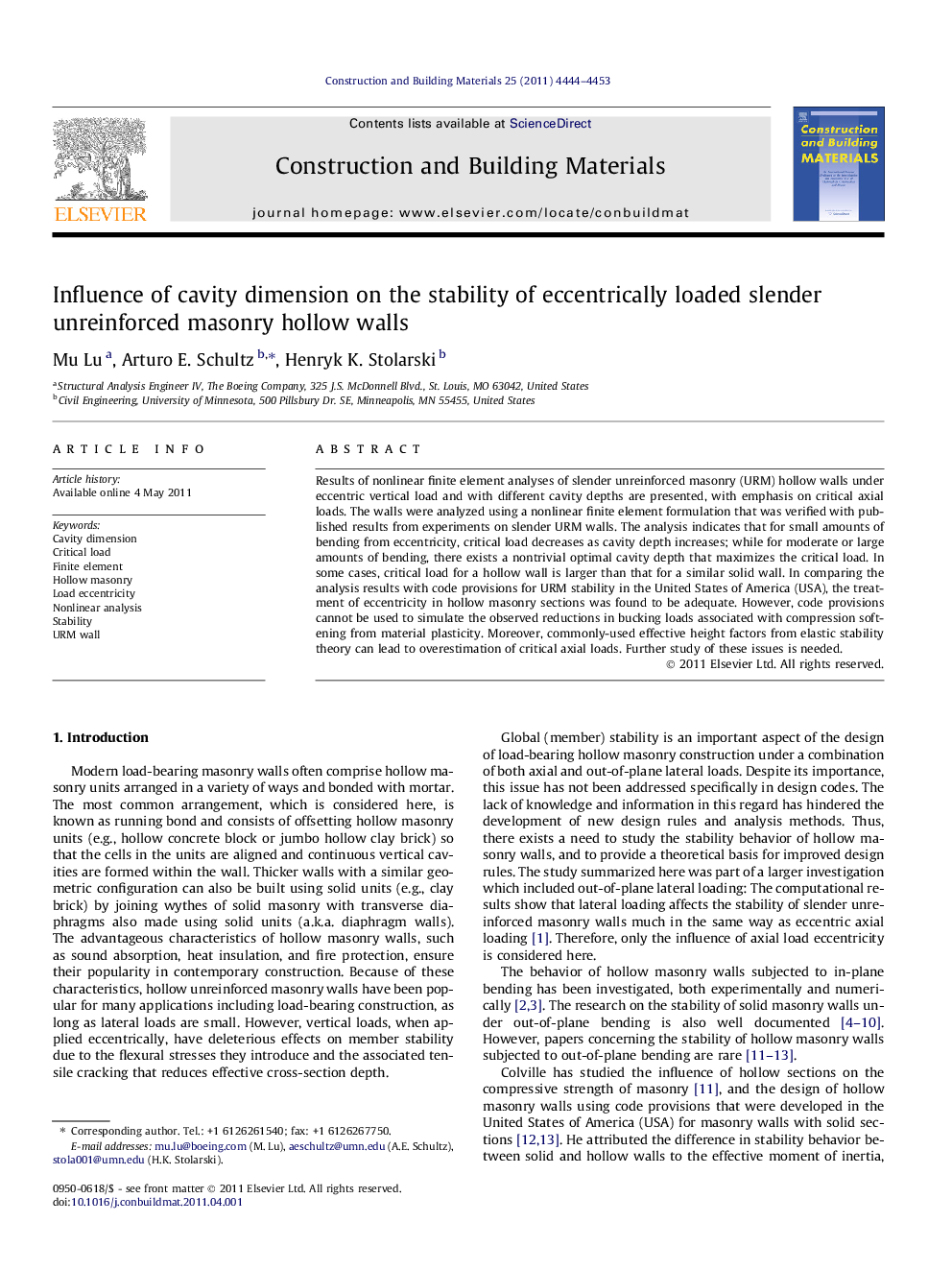| Article ID | Journal | Published Year | Pages | File Type |
|---|---|---|---|---|
| 259225 | Construction and Building Materials | 2011 | 10 Pages |
Results of nonlinear finite element analyses of slender unreinforced masonry (URM) hollow walls under eccentric vertical load and with different cavity depths are presented, with emphasis on critical axial loads. The walls were analyzed using a nonlinear finite element formulation that was verified with published results from experiments on slender URM walls. The analysis indicates that for small amounts of bending from eccentricity, critical load decreases as cavity depth increases; while for moderate or large amounts of bending, there exists a nontrivial optimal cavity depth that maximizes the critical load. In some cases, critical load for a hollow wall is larger than that for a similar solid wall. In comparing the analysis results with code provisions for URM stability in the United States of America (USA), the treatment of eccentricity in hollow masonry sections was found to be adequate. However, code provisions cannot be used to simulate the observed reductions in bucking loads associated with compression softening from material plasticity. Moreover, commonly-used effective height factors from elastic stability theory can lead to overestimation of critical axial loads. Further study of these issues is needed.
► A FE model to simulate the response of URM hollow walls to eccentric vertical loads is described. ► An optimal cavity depth was observed for walls with moderate or large vertical load eccentricities. ► Buckling loads from FE analysis display deleterious influence from compression softening. ► The treatment of eccentricity the current US code is adequate for hollow walls. ► Effective height factors from elastic stability analysis are not adequate in all cases.
